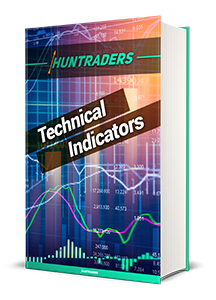Course Summary
Technical indicators

This is an essential course in the world of cryptocurrencies.
Indicators are numerical sequences derived from mathematical formulas applied on the instrument’s price movements. Technical indicators examine price movements from different aspects, providing valuable information to traders on market trends, volatility and momentum.
The presentation emphasises the basics of the indicators and the preparation of investment decisions based on the indicators. It covers the purpose, calculation and application of indicators in the cryptocurrency and stock markets. Furthermore, divergences and their early and correct recognition are introduced, with detailed explanation on how to identify them. It is also shown how to draw them and how to use them effectively in your trading strategy.
The material contains 25 detailed indicator examples with theoretical descriptions and with the interpretation of their trading signals used in practice. The presentation covers each indicator in-depth, starting with an introduction, then covering the calculation and application, the interpretation of trading signals, and the summary and conclusion.
The presentation contains 183 slides.
Number of Lessons: 14
Indicators are basic tools of technical analysis, because the statistics-based indicators can realistically reflect the current market mood.
Is it cliché to buy cheap and sell expensive? When is a share cheap? The lesson is looking for the answers to these questions.
The indicators can signal and continuously generate their own long and short signals. However, traders must be aware of the role of these signals in the analysis.
It is inevitable to prepare in advance for the investment decisions. Apart from the fundamental factors, investors must pay attention to the signals of the indicators.
It would be more efficient if the investor knew the background of the signals by learning the calculation methods of the different indicators.
The lesson categorises the indicators and briefly introduces the main attributes of these categories. The indicators should be chosen based on these categories if the trader’s signal system is based on indicators.
The type of the used indicator is important in different market situations, thus, traders must be aware of the given instrument’s state when choosing indicators.
Divergence is when the price movement and the indicator’s movement are opposing each other. These events warn traders about upcoming changes. The lesson shows the different types of divergences and their correct illustration.
Different investment durations request traders to take different time factors into account. Cycles interpreted in these time horizons are in this lesson.
Trend-following indicators are only reliable on trending markets. Their purpose is to identify trends and they do not generate long and short signals.
Those momentum indicators are the best for investors which shows market processes real time or forecasts them. The lesson describes the Momentum-type indicators.
These indicators use volume data as well. The size of the capital in- and outflow is sought to be determined since price movements can weaken or strengthen the trend.
These indicators give limited information about the direction of the price. However, they provide useful information about the volatility and the risk of the security. Its use is especially helpful when planning Risk and Money management strategies.
This lesson summarises the different long and short signals of the most important indicators.
Details
Quizzes
Lessons
Slices
Achievable Badge:

What You’ll Learn:
- How to base investment decisions on indicators,
- How to recognize and draw the divergences correctly,
- How to group the indicators,
- What are the trading signals of the indicators,
- How to identify oversold and overbought levels,
- What are the appropriate parameter settings of the indicators.

In this course:

29

25

22

22

18

16

13

7

4

2

2

1

1
Explore the E-Learning System:
Activate E-Learning


